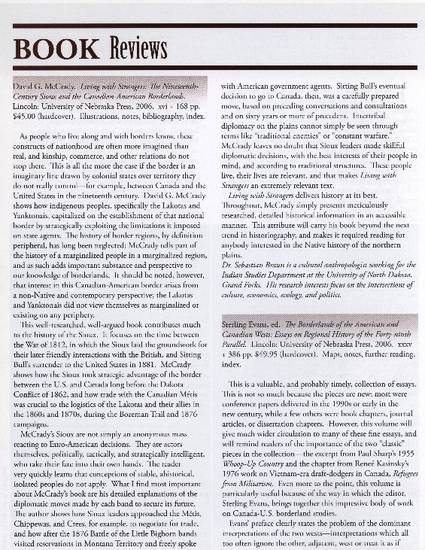
Article
Book Review: Living with Strangers: The Nineteenth-Century Sioux and the Canadian-American Borderlands, by David G. McCrady. Lincoln: University of Nebraska Press
North Dakota History
(2008)
Abstract
As people who live along and with borders know, these constructs of nationhood are often more imagined than real, and kinship, commerce, and other relations do not stop there. This is all the more the case if the border is an imaginary line drawn by colonial states over territory they do not really control - for example, between Canada and the United States in the nineteenth century. David G. McCrady shows how indigenous peoples, specifically the Lakotas and Yanktonais, capitalized on the establishment of that national border by strategically exploiting the limitations it imposed on state agents. The history of border regions, by definition peripheral, has long been neglected; McCrady tells part of the history of a marginalized people in a marginalized region, and as such adds important substance and perspective to out knowledge of borderland. It should be noted, however, that interest in this Canadian-American border arises from a non-Native and contemporary perspective; the Lakotas and Yanktonais did not view themselves as marginalized or existing on any periphery.
Disciplines
Publication Date
2008
Publisher Statement
2008. Braun, S. F. Posted with permission.
Citation Information
Sebastian Braun. "Book Review: Living with Strangers: The Nineteenth-Century Sioux and the Canadian-American Borderlands, by David G. McCrady. Lincoln: University of Nebraska Press" North Dakota History Vol. 75 Iss. 1&2 (2008) p. 26 Available at: http://works.bepress.com/sebastian-braun/37/
